2.6: Grammar- Gender and Number
( \newcommand{\kernel}{\mathrm{null}\,}\)
Gender
Instructor Video: Gender
In Hindi, nouns can be divided into two types of gender, namely पुलिंग “Masculine,” and स्त्रीलिंग “Feminine.” Like English, Hindi has natural gender such as boy and gild, man and woman. Unlike English though, Hindi has grammatical gender. For example: Book, table, etc, are female. Whereas, room, house, door, etc. are male.
There is no certain rules to learn about gender assignment to particular noun in Hindi. Based on common observation, masculine and feminine nouns can be further classified in two subcategories as shown in the following table (1).
| Masculine | Feminine | |
| Marked (Type 1) | Nouns that ends in -आ “-aa.” | Nouns that ends in -इ/ई “-i/ii.” |
| Examples | लड़का laRakaa “boy.”
कमरा kamaraa “room.” बच्चा bachchaa“boy child.” दरवाज़ा darawaazaa “door.” |
लड़की laRakii “girl”
बच्ची bachchii “girl child.” खिड़की khiRakii “window.” कुर्सी kursii “chair.” |
| Unmarked (Type 2) | Nouns that do not end in -आ “-aa.” | Nouns that do not end in -इ/ई “-i/ii.“ |
| Examples | घर ghar “home.”
फल phal “fruit.” सेब seb “apple.” पुस्तकालय pustakaalay “library.” |
किताब kitaab “book.”
मेज़ mez “table.” तस्वीर taswiir “picture.” कमीज़ kamiiz “shirt.” |
Table 1. Sub-categories of Masculine and Feminine Gender
But these rules have multiple exceptions such as:
Nouns ending in -आ “-aa” but feminine.
- माता maataa “mother.”
- लता lataa “leaf,”
- घटा ghaTaa “cloud”
- दवा dawaa “medicine,” etc.
Nouns ending in -इ/ई”-i/ii” but masculine.
- साथी saathii “Friend.”
- हाथी hathii “Elephant.”
- विद्यार्थी vidyaarthii “Student” etc.
Test Yourself
https://openbooks.lib.msu.edu/ll151/?p=768
Number
Instructor Video: Number
Like English, Hindi has two numbers, namely, singular number, and plural number. To change singular nouns into plurals in Hindi, it is important to know the gender of the nouns and apply the following rules.
- All marked masculine nouns (that end in -आ “-aa.”) change into -ए “-e.”
- Unmarked masculine nouns (that do not end in -आ “-aa.”) do not change their form in plural.
- All marked feminine nouns (that end in -इ/ई “i/ii.”) change into -इयाँ “-iyan.”
- Unmarked feminine nouns (that do not end in -इ/ई “i/ii.”) change into -यें/एं “-yen.”
The following table (2) summarizes these rules and shows examples.
| Masculine | Feminine | |
| Marked (Type 1) | Nouns that ends in -आ “-aa.” | Nouns that ends in -इ/ई “-i/ii.” |
| Rule for plural | change -आ “-aa” into -ए “-e” | change -इ/ई “-i/ii” into -इयाँ “-iyan” |
| Examples | लड़का – लड़के laRake “boys.”
कमरा – कमरेkamare “rooms.” बच्चा – बच्चेbachche “boy children.” दरवाज़ा – दरवाज़ेdarawaaze “door.s” |
लड़की – लड़कियाँ laRakyani “girls”
बच्ची – बच्चियाँbachchiyan “girl children.” खिड़की – खिड़कियाँkhiRakiyan “windows.” कुर्सी – कुर्सियाँkursiyan “chairs.” |
| Unmarked (Type 2) | Nouns that do not end in -आ “-aa.” | Nouns that do not end in -इ/ई “-i/ii.“ |
| Rule for plueal | No changes in form | change into -यें/एं “-yen.” |
| Examples | घर – घर ghar “homes.”
फल – फल phal “fruits.” सेब – सेब seb “apples.” पुस्तकालय – पुस्तकालय pustakaalay “libraries.” |
किताब – किताबें kitaaben “books.”
मेज़ – मेजेंmezen “table.s” तस्वीर – तस्वीरेंtaswiiren “pictures.” कमीज़ – कमीज़ेंkamiizen “shirts.” |
Table 2. Summary for rules to change singular to plural nouns based on the sub-categories of Masculine and Feminine Gender.
Test yourself
|
घर-गृहस्थी (House & household) Please learn these vocabulary and change them into plural. |
|||
| Singular Nouns | gender | Meaning | Plural Nouns |
| दीवार | f. | wall | |
| दूध | m. | milk | |
| मकान | m. | house | |
| फ़र्श | f. | floor | |
| कुर्सी | f. | chair | |
| दरवाज़ा | m. | door | |
| खिड़की | f. | window | |
| छत | f. | roof, ceiling | |
| गुसलख़ाना | m. | bathroom | |
| तौलिया | m. | towel | |
| तेल | m. | oil | |
| साबुन | m. | soap | |
| आईना /शीशा | m. | mirror | |
| कंघी | f. | comb | |
| अलमारी | f. | cupboard, wardrobe, shelf | |
| खाट | f. | cot | |
| पलंग | m. | bed | |
| चादर | m. | sheet | |
| रज़ाई | f. | quilt | |
| कंबल | m. | blanket | |
| तकिया | m. | pillow | |
| लैंप | m. | lamp | |
| बल्ब | m. | bulb | |
| घड़ी | f. | watch, clock | |
| चाकू | m. | knife | |
| तस्वीर | f. | picture, photograph | |
| कैलेंडर | calendar | ||
| थैला | m. | bag | |
| मोमबत्ती | f. | candle | |
| इस्तरी | f. | iron | |
| रसोई | f. | kitchen | |
| कटोरा | m. | big bowl | |
| कटोरी | f. | small bowl | |
| थाली | f. | metal plate | |
| बर्तन | m. | utensil | |
| कड़ाही | f. | a frying pan, wok | |
| गिलास | m. | glass | |
| चूल्हा | m. | stove | |
| चाबी | f. | key | |
| ताला | m. | lock | |
| चिमटा | m. | tongs | |
| पतीला | m. | cooking vessel | |
| तवा | m. | skillet | |
| चकला | m. | rolling board | |
| चौकी | f. | rolling board | |
| प्याला | m. | cup | |
| झाडू | f. | broom | |
| परदा | m. | curtain | |
| टोपी | f. | cap | |
| मोज़ा | m. | socks | |
| रूमाल | m. | handkerchief | |
Vocabulary 5. Names of Fruits and Vegetables
| फलों के नाम “Names of fruits” | ||
 |
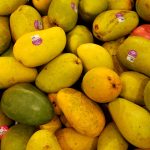 |
 |
| सेब m. apple | आम m. mango | केला m. banana |
 |
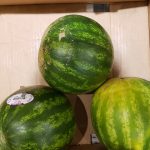 |
 |
| संतरा m. orange | तरबूज़ m. watermelon | अनन्नास m. pineapple |
 |
 |
 |
| पपीता m. papaya | अनार m. pomegranate | अँगूर m. grapes |
| सब्ज़ियों के नाम “Names of Vegetables” | ||
 |
 |
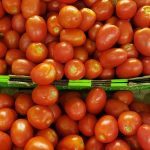 |
| आलू m. potato | प्याज m. onion | टमाटर m. tomato |
 |
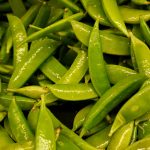 |
 |
| पालक m. spinach | मटर m. peas | फूल गोभी f. cauliflower |
 |
 |
 |
| धनिया | पत्ता गोभी f. cabbage | बैंगन m. egg plant |
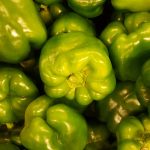 |
 |
 |
| शिमला मिर्च f. bell pepper | नींबू m. lemon | खीरा m. cucumber |
Test Yourself
True/False
https://openbooks.lib.msu.edu/ll151/?p=768
https://openbooks.lib.msu.edu/ll151/?p=768
https://openbooks.lib.msu.edu/ll151/?p=768
https://openbooks.lib.msu.edu/ll151/?p=768
https://openbooks.lib.msu.edu/ll151/?p=768
https://openbooks.lib.msu.edu/ll151/?p=768
https://openbooks.lib.msu.edu/ll151/?p=768
https://openbooks.lib.msu.edu/ll151/?p=768
https://openbooks.lib.msu.edu/ll151/?p=768
https://openbooks.lib.msu.edu/ll151/?p=768
https://openbooks.lib.msu.edu/ll151/?p=768
https://openbooks.lib.msu.edu/ll151/?p=768
https://openbooks.lib.msu.edu/ll151/?p=768
https://openbooks.lib.msu.edu/ll151/?p=768
https://openbooks.lib.msu.edu/ll151/?p=768
https://openbooks.lib.msu.edu/ll151/?p=768
https://openbooks.lib.msu.edu/ll151/?p=768
https://openbooks.lib.msu.edu/ll151/?p=768
https://openbooks.lib.msu.edu/ll151/?p=768
https://openbooks.lib.msu.edu/ll151/?p=768
Vocabulary Test
https://openbooks.lib.msu.edu/ll151/?p=768
धन्यवाद!


